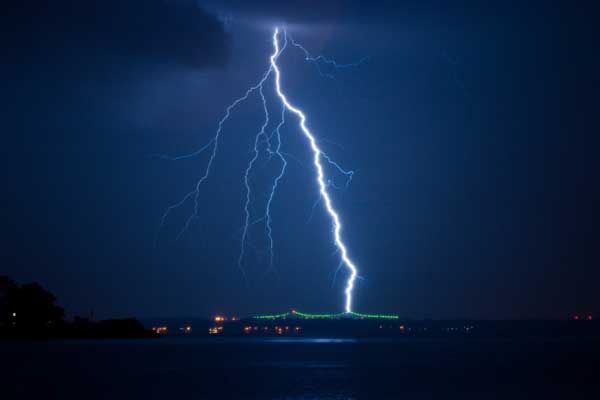Penn-State research team unravels lightning's oldest mystery

[Lightning striking a bridge. Photo Credit to Unsplash]
Penn State scientists have resolved a 250-year-old mystery about what triggers lightning inside storm clouds, publishing their findings on July 28, 2025, in the Journal of Geophysical Research.
For centuries, lightning has long been recognized for its sheer power and danger, yet the exact moment when it sparks into existence remains unexplained.
While the effects of lightning are familiar, scientists had struggled to fully explain what triggers this dramatic burst of electricity until now.
The Penn State study focused on how particles inside thunderclouds interact, building up enough electrical energy to form a lightning bolt.
Scientists have pursued the mystery of lightning’s trigger since Benjamin Franklin’s experiments in the 1700s, but earlier theories never fully explained the moment it begins.
Dr. Victor Pasko, a professor of electrical engineering at Penn State and lead researcher on the study, has studied atmospheric electricity and lightning formation for over two decades.
His team’s work connects multiple physical processes into a unified model, offering the most detailed explanation yet of how lightning begins.
Zaid Pervez, a doctoral researcher, helped align the model with both laboratory experiments and real-world data, confirming the core process behind lightning initiation.
The researchers zeroed in on a phenomenon called “runaway electron avalanches,” a chain reaction where a few super-fast electrons gain enough speed to knock other electrons loose, rapidly multiplying until the process creates a powerful stream of electricity.
In this process, high-energy electrons in the atmosphere accelerate due to strong electric fields inside the cloud.
As they move, they collide with other air molecules and create even more high-energy electrons.
This chain reaction eventually leads to the formation of a highly conductive channel in the air, which appears as a lightning bolt.
The team gathered evidence using sensors mounted on balloons, aircraft, and ground-based observations.
These tools allowed them to measure the atmospheric conditions and particle activity inside real thunderclouds.
Their data confirmed that these runaway electrons were indeed present and matched the behavior predicted in earlier simulations and laboratory experiments.
According to the study, the key trigger occurs when cosmic rays from space hit Earth's atmosphere and produce a shower of secondary particles.
When these particles enter a thundercloud’s strong electric field, they can start the runaway avalanche.
The effect is most likely in severe storms with powerful vertical electric fields.
The findings resolve a debate that has lasted for decades.
Some scientists had suggested that lightning starts when small ice particles inside clouds rub together and create enough friction to build up static electricity, known as the “ice collision” ortriboelectric charging theory.
Others believed that water droplets or temperature differences were to blame.
But the new evidence indicates that high-energy electrons from cosmic ray collisions play a much larger role than previously thought.
This breakthrough not only deepens our understanding of lightning but also has potential applications in weather forecasting and aviation safety.
Predicting when and where runaway electron avalanches are likely to occur could help improve storm warnings and reduce lightning-related accidents during flights.
Lightning strikes cause billions of dollars in damage each year and endanger both lives and essential services.
Understanding how these strikes begin is a key step toward better prevention and preparedness.
The research team at Penn State plans to continue developing their lightning model, making it available as a resource for scientists investigating extreme atmospheric conditions.
By replicating the internal dynamics of thunderclouds, their simulation could enhance early-warning systems for lightning and help protect critical sites like airports, power stations, and launch complexes.
They also see potential in expanding the model’s application to study lesser-understood phenomena such as terrestrial gamma-ray flashes.

- Yeojun Jung / Grade 10
- Chadwick International School

![THE HERALD STUDENT REPORTERS [US]](/assets/images/logo_student_us.png)
![THE HERALD STUDENT REPORTERS [Canada]](/assets/images/logo_student_ca.png)
